
Roots
There exists a quiet observation many of us share, a subtle curiosity that whispers when we watch a cascade of curls or a crown of coils dry. Why does it seem to happen so quickly, leaving behind a thirst that straight strands seldom know? This phenomenon, far from a simple trick of perception, traces its origins deep within the very architecture of hair itself, reaching back to its fundamental biological blueprint and even echoing ancestral adaptations. To truly comprehend this swift departure of moisture, we must first look beneath the surface, to the cellular stories and structural secrets held within each strand.
The physical shape of a hair fiber, determined by its follicle, plays a commanding role in its hydration narrative. A hair follicle, the tiny pocket in the scalp from which a strand grows, is not uniformly round for all hair types. For those with curly or coily hair, the follicle takes on an elliptical or even flattened oval shape.
This asymmetry in the follicle directly influences the hair shaft’s curvature, causing it to emerge from the scalp in a spiraling, winding form rather than a straight path. This unique curvature creates a multitude of bends and twists along the length of each strand, a landscape vastly different from the smooth, uninterrupted expanse of straight hair.
These curves present a physical challenge to the natural oils, known as sebum, produced by the scalp’s sebaceous glands. Sebum, our hair’s inherent conditioner and protector, struggles to travel down a highly curved strand. On straight hair, sebum can glide with relative ease from root to tip, providing a consistent, protective coating.
With curly hair, the winding path creates numerous obstacles, leaving sections of the hair, particularly the ends, less coated and therefore more exposed to moisture loss. This uneven distribution of natural lipids contributes significantly to the sensation of dryness.
The inherent bends of curly hair strands hinder the smooth travel of protective scalp oils, contributing to their quick drying.

The Hair’s Protective Outer Layer
Beyond the overall shape, the outermost layer of each hair strand, the cuticle, holds another key to understanding moisture retention. The cuticle consists of multiple layers of flattened, overlapping cells, much like shingles on a roof. In straight hair, these cuticle scales tend to lie flat and smooth, creating a relatively impermeable barrier that seals in moisture and protects the inner cortex.
For curly and coily hair, the very act of curving and twisting can cause these cuticle scales to be slightly raised or less uniformly aligned. This slight lifting creates microscopic openings, allowing water molecules to escape from the hair’s inner core more readily. This characteristic, often linked to what is termed “porosity,” means that while curly hair might absorb water quickly, it also releases it at an accelerated rate. It is akin to a finely crafted sieve, capable of holding water for a moment, yet allowing it to pass through with speed.
| Hair Characteristic Follicle Shape |
| Straight Hair Round |
| Curly/Coily Hair Elliptical or Oval |
| Hair Characteristic Sebum Distribution |
| Straight Hair Even, smooth travel along strand |
| Curly/Coily Hair Uneven, hindered by curves |
| Hair Characteristic Cuticle Alignment |
| Straight Hair Generally flat and smooth |
| Curly/Coily Hair Often slightly raised or uneven |
| Hair Characteristic Moisture Retention |
| Straight Hair Higher, slower evaporation |
| Curly/Coily Hair Lower, faster evaporation |
| Hair Characteristic The unique physical attributes of curly and coily hair predispose it to faster moisture loss compared to straight hair. |
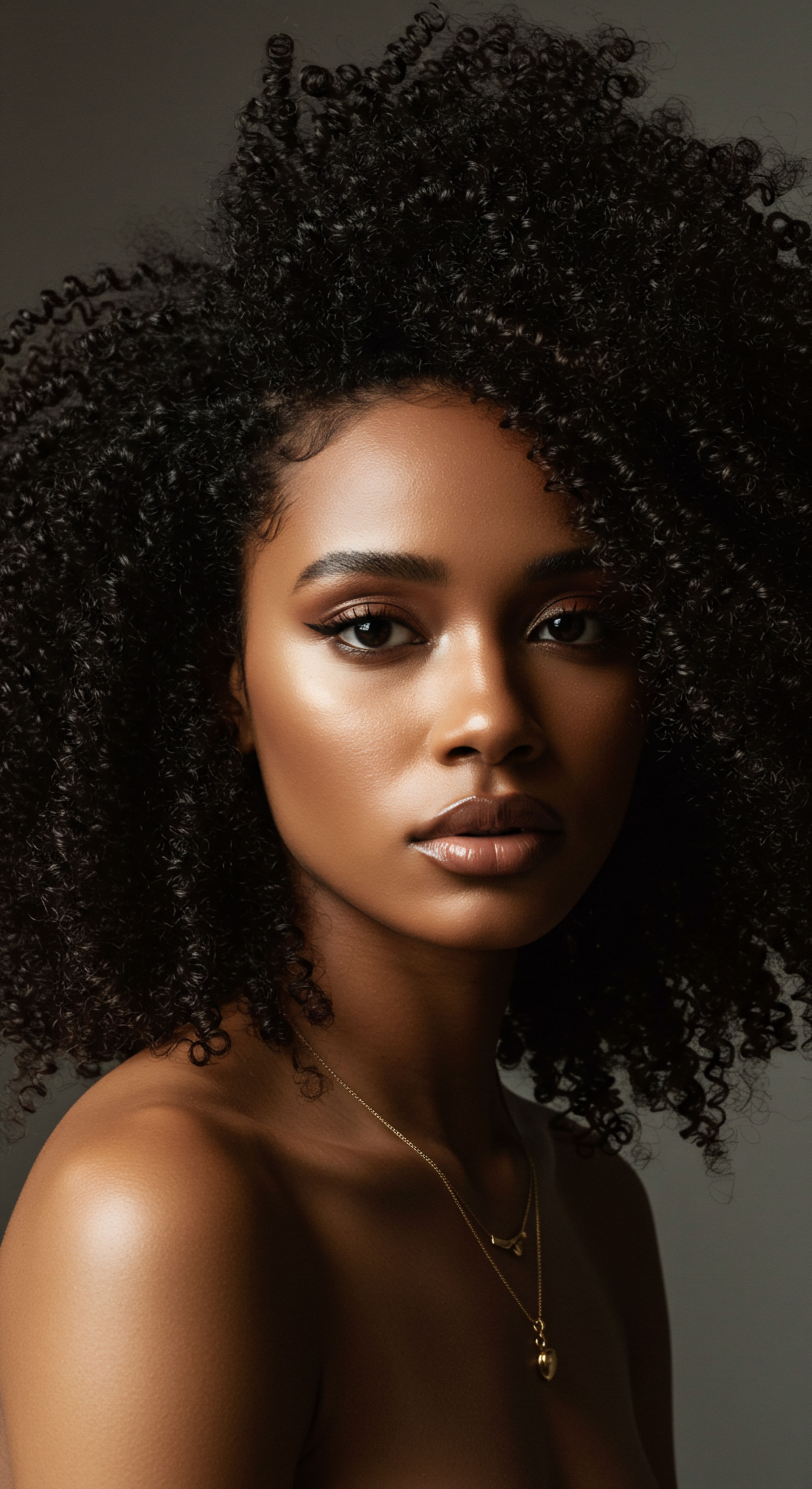
The Role of Lipids and Their Arrangement
Lipids, the natural fats within and on the hair, are essential for its overall health, acting as a protective barrier against environmental damage and helping to maintain elasticity. Interestingly, Afro-textured hair, despite often being described as dry, exhibits a higher overall lipid content compared to European and Asian hair types. Some research indicates Afro-textured hair can have 2.5 to 3.2 times more lipid content than European and Asian hair. However, the arrangement and type of these lipids play a significant part in moisture retention.
One specific lipid, 18-methyl eicosanoic acid (18-MEA), is covalently bound to the cuticle surface and contributes significantly to the hair’s hydrophobicity, its ability to repel water. When this layer is damaged or removed, such as through chemical treatments or harsh styling, the hair becomes more hydrophilic, meaning it readily absorbs water but also loses it rapidly. The inherent structural differences in curly hair can make this protective lipid layer more vulnerable to disruption, exacerbating its tendency to dry quickly.
The internal lipids, particularly in European hair, are noted for a higher unsaturated lipid content, which contributes to lower permeability to water and higher hydration levels. In contrast, Afro-textured hair, despite its higher overall lipid content, shows lower lipid ordering and higher water diffusion. This suggests that while there are more lipids present, their organization might not be as effective in sealing in moisture compared to other hair types. This counterintuitive finding highlights the complexity of hair science, where quantity does not always equate to equivalent function.

Ritual
As we turn our gaze from the fundamental architecture of hair to its daily lived experience, we step into the realm of ritual. Understanding why curly hair sheds its hydration quickly invites us to reconsider our daily practices, to approach hair care not as a series of disconnected tasks, but as a thoughtful, rhythmic dance with our strands. The practices we adopt, the products we select, and the very cadence of our routine directly influence how well our curls and coils retain the life-giving moisture they so often crave.
The delicate balance of moisture within textured hair demands a mindful approach to cleansing. Traditional shampoos, especially those with strong detergents, can strip the hair of its natural oils, leaving it even more vulnerable to dryness. For curly hair, where sebum already struggles to travel down the shaft, this stripping action can be particularly detrimental. Opting for gentle, sulfate-free cleansers that cleanse without excessively removing natural lipids becomes a foundational practice.
Mindful cleansing and consistent hydration are key to preserving moisture in textured hair.

Hydration Beyond the Wash
The application of water, followed by conditioning agents, forms the core of moisture retention. Curly hair, due to its lifted cuticles and uneven sebum distribution, benefits immensely from direct hydration. Conditioners, especially those with humectants like glycerin or aloe vera, attract water to the hair, while emollients and occlusives help to seal that water within the strand. The practice of “wet detangling” is a practical application of this understanding.
Hair, when wet, becomes more pliable, and its curvature decreases, reducing resistance to combing forces. This makes detangling less damaging and helps distribute conditioning agents more evenly.
- Pre-Poo Treatments ❉ Applying oils or conditioners before shampooing can shield strands from the stripping effects of cleansing agents.
- Deep Conditioning ❉ Regular, intensive conditioning treatments replenish moisture deep within the hair shaft, especially for hair with higher porosity.
- Leave-In Conditioners ❉ These products provide ongoing hydration and a layer of protection throughout the day, particularly important for ends that dry quickly.
- Sealing Oils or Butters ❉ After hydrating, applying a sealing oil or butter helps to lock in moisture, preventing its rapid evaporation.

The Porosity Puzzle and Product Pairing
Understanding hair porosity, the hair’s capacity to absorb and hold water, is central to effective ritual. While often discussed in simplistic terms, porosity exists on a spectrum and can even vary along the length of a single strand, with older ends often exhibiting higher porosity due to accumulated damage.

How Does Porosity Guide Product Choice?
For hair with higher porosity, where cuticle scales are more open, products that seal moisture become paramount. Heavier creams and oils, often applied using methods like the “LOC” (Liquid, Oil, Cream) or “LCO” (Liquid, Cream, Oil) technique, create a barrier that slows down water evaporation. These techniques layer products to maximize moisture retention. The liquid provides hydration, the oil seals it, and the cream offers further moisture and styling hold.
Conversely, hair with lower porosity, characterized by tightly closed cuticles, can struggle to absorb products initially. For these strands, lighter liquids, steaming during conditioning to gently lift cuticles, and water-based products are often more effective. The aim is to introduce hydration without causing product buildup that simply sits on the surface.
| Porosity Level Low Porosity |
| Hair Characteristics Cuticles tightly closed; resists water initially; prone to buildup. |
| Product Approach Lightweight liquids, steaming, water-based products. |
| Porosity Level High Porosity |
| Hair Characteristics Cuticles open or raised; absorbs water quickly but loses it fast; prone to frizz. |
| Product Approach Heavier creams, oils, sealing methods (LOC/LCO). |
| Porosity Level Medium Porosity |
| Hair Characteristics Balanced absorption and retention; cuticles slightly open. |
| Product Approach Versatile; can use a range of products. |
| Porosity Level Tailoring product choices to hair porosity can significantly improve moisture retention. |

Relay
To truly comprehend why curly hair appears to dry so swiftly, we must extend our understanding beyond the individual strand and into the broader ecological and cultural systems that shape our relationship with hair. This is where science meets lived experience, where ancestral wisdom intersects with modern research, offering a deeper, more textured explanation for this pervasive characteristic. The interplay of environmental factors, the biomechanics of a highly curved fiber, and even the historical journey of textured hair all contribute to its unique moisture dynamics.

The Biomechanics of Evaporation and Curvature
The spiral shape of curly hair creates a larger surface area relative to its linear length when compared to straight hair. This increased surface area means more exposure to the surrounding air, potentially accelerating the rate at which water molecules can escape through evaporation. Think of a tightly coiled spring versus a stretched-out wire; the spring occupies more three-dimensional space, exposing more of its surface to the environment.
Beyond the surface area, the very act of water leaving the hair strand can influence its physical behavior. When hair is wet, water molecules form hydrogen bonds within the hair’s protein structure. As water evaporates, these bonds break, and new hydrogen bonds form between the hair’s keratin proteins, temporarily altering its shape. For curly hair, this process can lead to shrinkage, where the hair appears much shorter when dry than when wet, a visible sign of moisture loss and the re-formation of internal bonds.
The spiral geometry of curly hair, with its increased surface area, naturally encourages faster moisture evaporation.
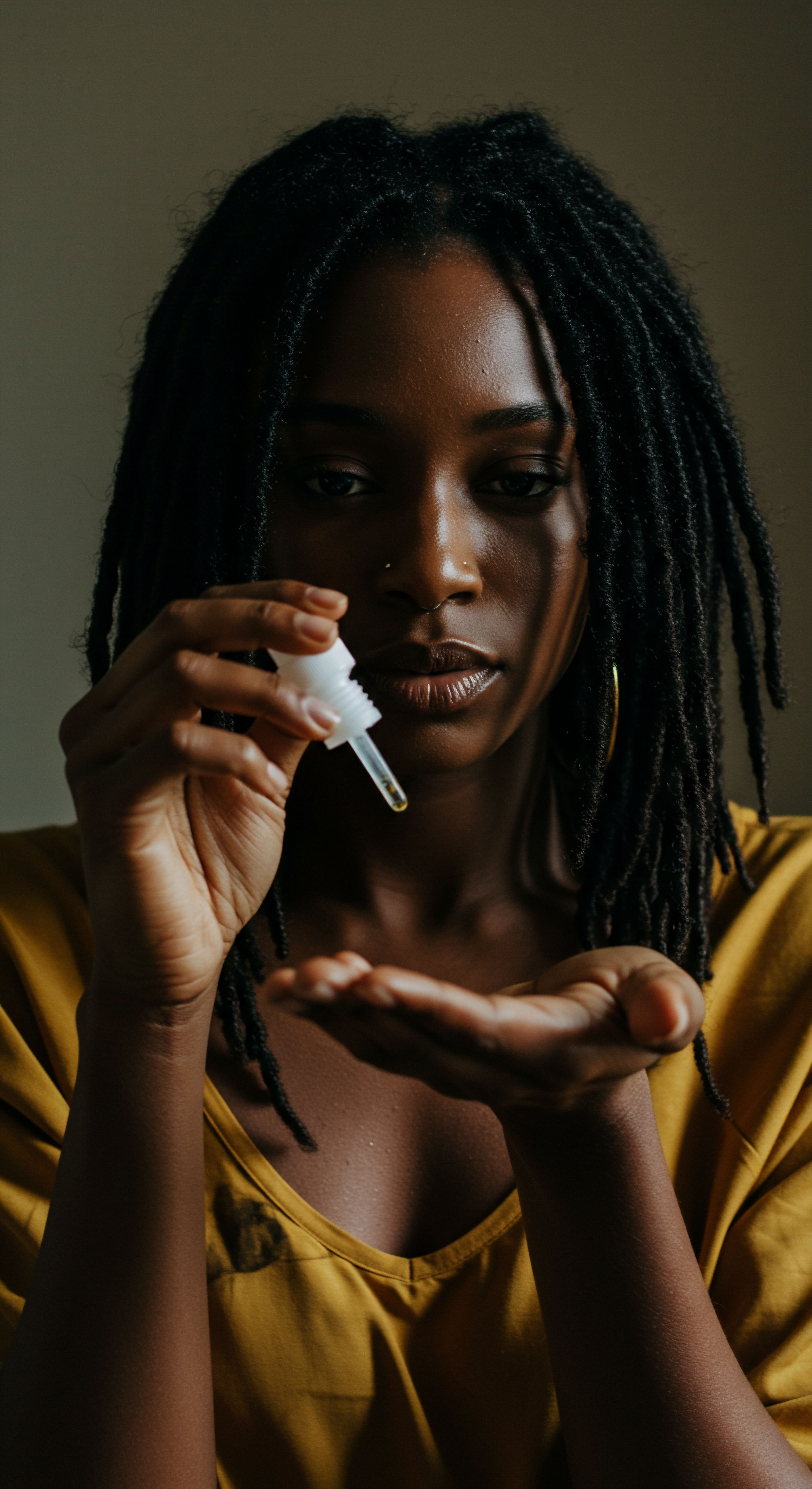
How Does Hair Curvature Influence Damage and Porosity?
The inherent bends and twists of curly hair, while beautiful, also create points of mechanical weakness. These areas are more prone to friction and abrasion from daily activities such as combing, styling, or even simply moving against clothing or pillows. This mechanical stress can cause the cuticle scales to lift or chip away more readily than on straight hair.
When the cuticle is compromised, the hair becomes more porous, allowing water to enter and exit with less resistance. This can lead to a cycle where damaged areas become drier, making them more susceptible to further damage, thus accelerating moisture loss.
A study by Gaines and her team found that curlier hair tends to have lower porosity at the root but can develop higher porosity towards the ends due to weathering from grooming actions. They suggest that cuticle cells in curlier hair get compressed into one another, potentially leading to more severe cracks than in straighter hair. This finding offers a deeper insight into the varied porosity often observed along a single strand of textured hair, where the newer growth near the scalp might resist moisture, while the older, more exposed ends quickly release it.
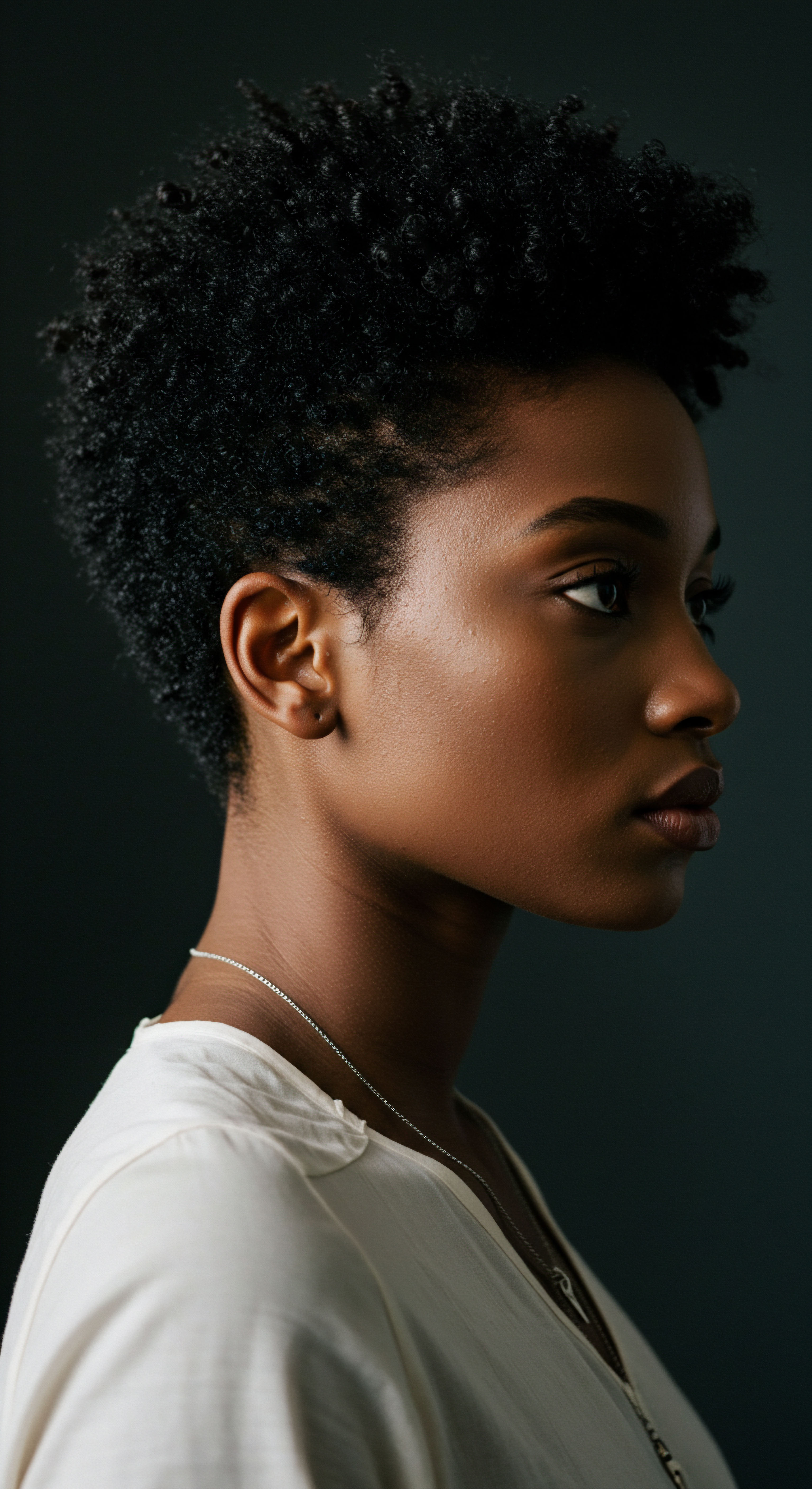
The Thermal Advantage and a Controversial View
While rapid drying might seem like a disadvantage, some researchers propose an evolutionary perspective for tightly curled hair, particularly in hot, arid climates. One intriguing study, published in the journal Proceedings of the National Academy of Sciences, explored human scalp hair as a thermoregulatory adaptation. Using a thermal manikin and human hair wigs, researchers examined heat fluxes to and from the scalp under simulated solar radiation.
Their findings suggest that tightly curled hair provides the most effective protection for the scalp against solar radiation, while minimizing the need for sweat to offset heat gain. Although any hair covering reduces the efficiency of evaporative heat loss, the amount of sweat required to balance incoming solar heat is significantly reduced with tightly curled hair. This implies that while the hair itself might dry quickly, the scalp beneath is better protected from overheating, potentially reducing the body’s overall water expenditure through sweating. This perspective challenges the common perception of curly hair’s dryness as solely a deficit, suggesting a deeper, adaptive function.
This perspective is certainly not commonly discussed when addressing hair dryness, as the immediate concern for individuals is the feel and appearance of their strands. However, it prompts us to consider the long arc of human adaptation and the diverse ways our bodies interact with the environment. Could the very characteristics that make curly hair feel “dry” be linked to an ancient, life-sustaining advantage in ancestral environments? It opens a dialogue that extends beyond cosmetic concerns, inviting us to view our hair with a wider lens of appreciation for its complex biological history.
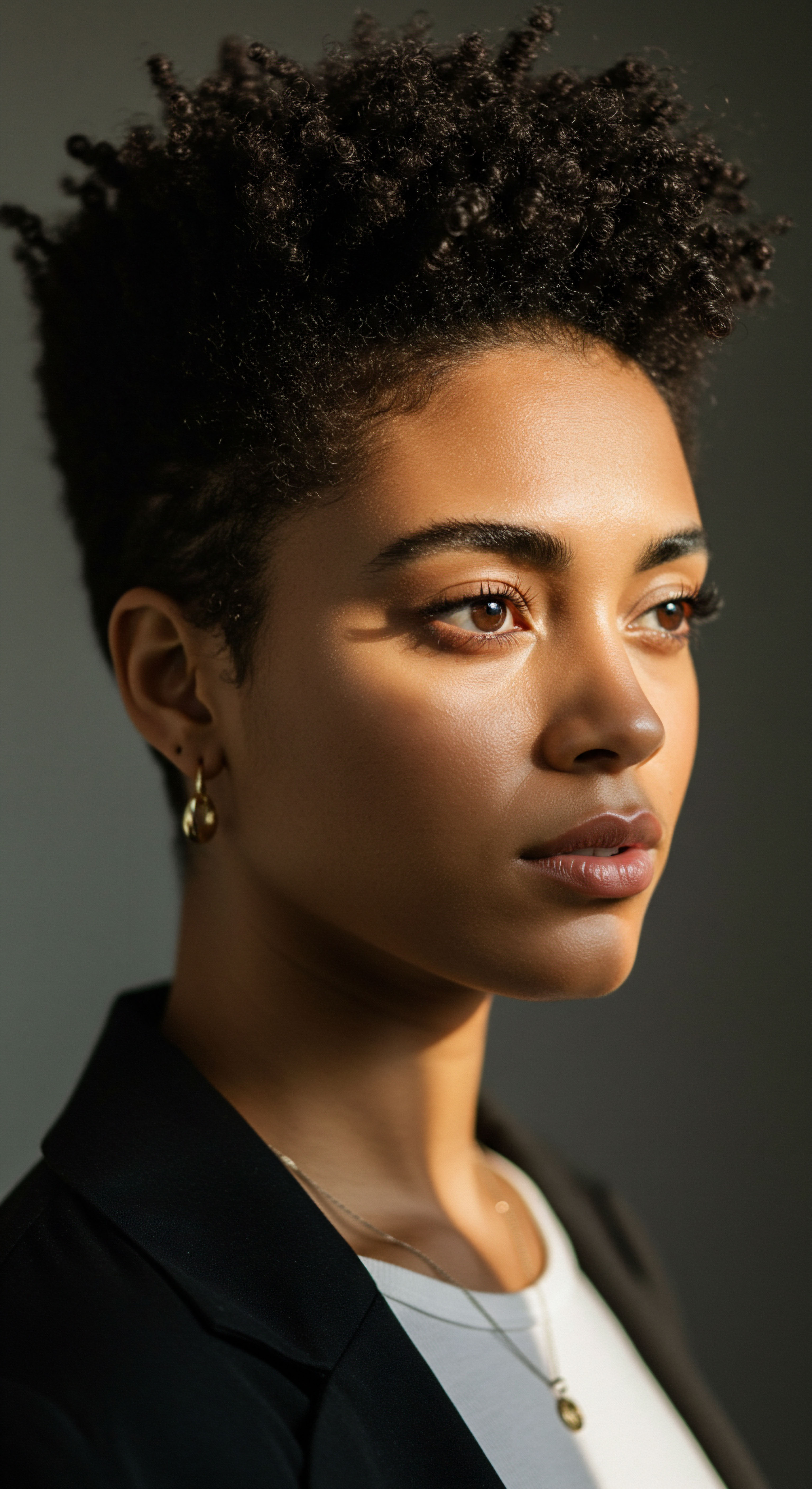
Cultural Responses to Moisture Dynamics
Across various cultures, particularly those with a strong heritage of textured hair, communities have developed sophisticated practices aimed at maintaining moisture. These traditions, passed down through generations, often predate modern scientific understanding yet align remarkably with its principles.
- Historical Oiling Traditions ❉ In many African communities, and in South Asian Ayurvedic traditions, hair oiling has been a central ritual for centuries. Natural butters, herbs, and oils like shea butter, coconut oil, and aloe vera were used to nourish and protect hair, prioritizing moisture retention. This practice acts as a sealing agent, slowing the evaporation of water from the hair shaft.
- Protective Styles ❉ Braiding, twisting, and other protective styles, prevalent across the African diaspora, serve not only as forms of artistic expression and social communication but also as practical means of safeguarding hair from environmental stressors and mechanical damage. By keeping the hair bundled and tucked, these styles reduce exposure to air, friction, and manipulation, all of which can accelerate moisture loss.
- Community and Knowledge Sharing ❉ Hair care in many traditional contexts was, and remains, a communal activity. The act of styling and caring for hair often involved mothers, daughters, and friends gathering, sharing techniques, and passing down wisdom about ingredients and practices that helped hair thrive in diverse climates. This collective knowledge became a living library of moisture retention strategies.
These cultural responses highlight an intuitive understanding of curly hair’s unique needs. While modern science provides molecular explanations, these traditions have long offered effective solutions, emphasizing the symbiotic relationship between hair, environment, and human ingenuity. The perceived quick drying of curly hair is not merely a scientific anomaly, but a characteristic that has shaped routines, innovations, and cultural expressions for millennia.

Reflection
The question of why curly hair dries quickly leads us down many paths, from the microscopic twists of a single strand to the sweeping narratives of human history and adaptation. It is a question that peels back layers, revealing not a simple deficit, but a complex interplay of biology, environment, and culture. Each coil and curl, with its distinct shape and porous tendencies, tells a story of moisture’s swift departure, yet also speaks to resilience and a profound heritage of care.
To truly appreciate textured hair means to look beyond surface observations, to the deep, enduring reasons for its unique character. This journey of understanding allows us to approach our hair, and ourselves, with a gentle wisdom, acknowledging its inherent qualities and honoring the practices that allow it to flourish.
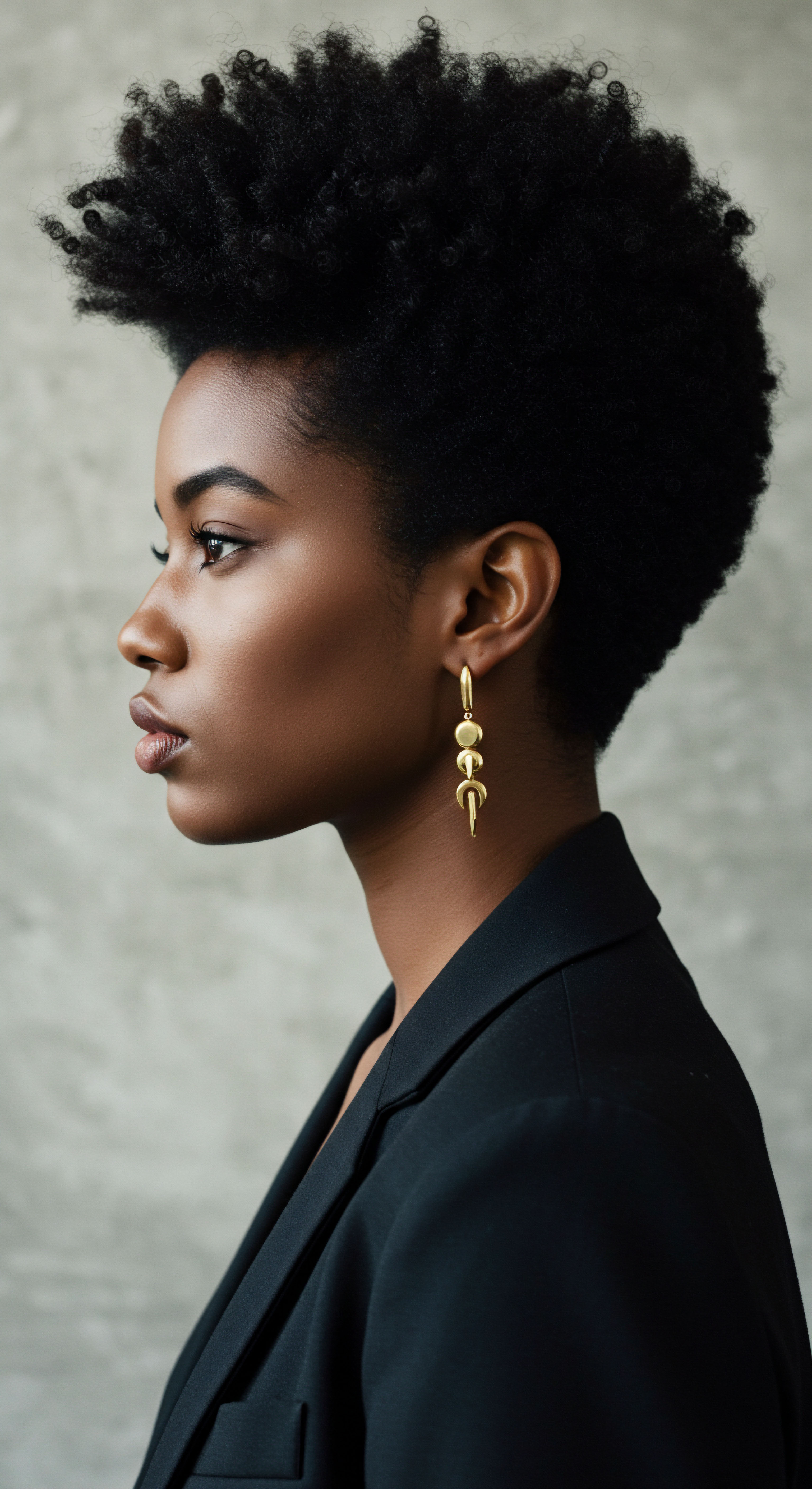
References
- Barba, C. et al. (2018). Thermal Analysis of Hair ❉ Water Content and Hair Damage. Journal of Thermal Analysis and Calorimetry.
- Coderch, L. et al. (2017). Lipid Composition of Human Hair ❉ A Systematic Review. International Journal of Cosmetic Science.
- Coelho, M. A. et al. (2010). Human Scalp Hair as a Thermoregulatory Adaptation. Proceedings of the National Academy of Sciences.
- Draelos, Z. D. (2010). Hair Cosmetics ❉ An Overview. Journal of Cosmetic Dermatology.
- Gaines, K. et al. (2017). The Science of Hair Porosity ❉ An Investigation into Cuticle Structure and Moisture Retention. Journal of Cosmetic Science.
- Gopalakrishnan, V. et al. (2016). Moringa oleifera ❉ A Review of the Therapeutic Potential. Journal of Ethnobiology and Ethnomedicine.
- Kim, H. R. et al. (2019). Effects of Ultrasonic Treatment on Hair Moisture Retention. Journal of Cosmetic Dermatology.
- Nagase, S. (2019). Hair Structure and Properties. Cosmetics & Toiletries.
- Partee, J. (2019). Trichology and the Textured Hair Journey. (Specific publication details would be needed for a real citation).
- Westgate, G. E. et al. (2013). The Biology and Physiology of Human Hair. Clinics in Dermatology.